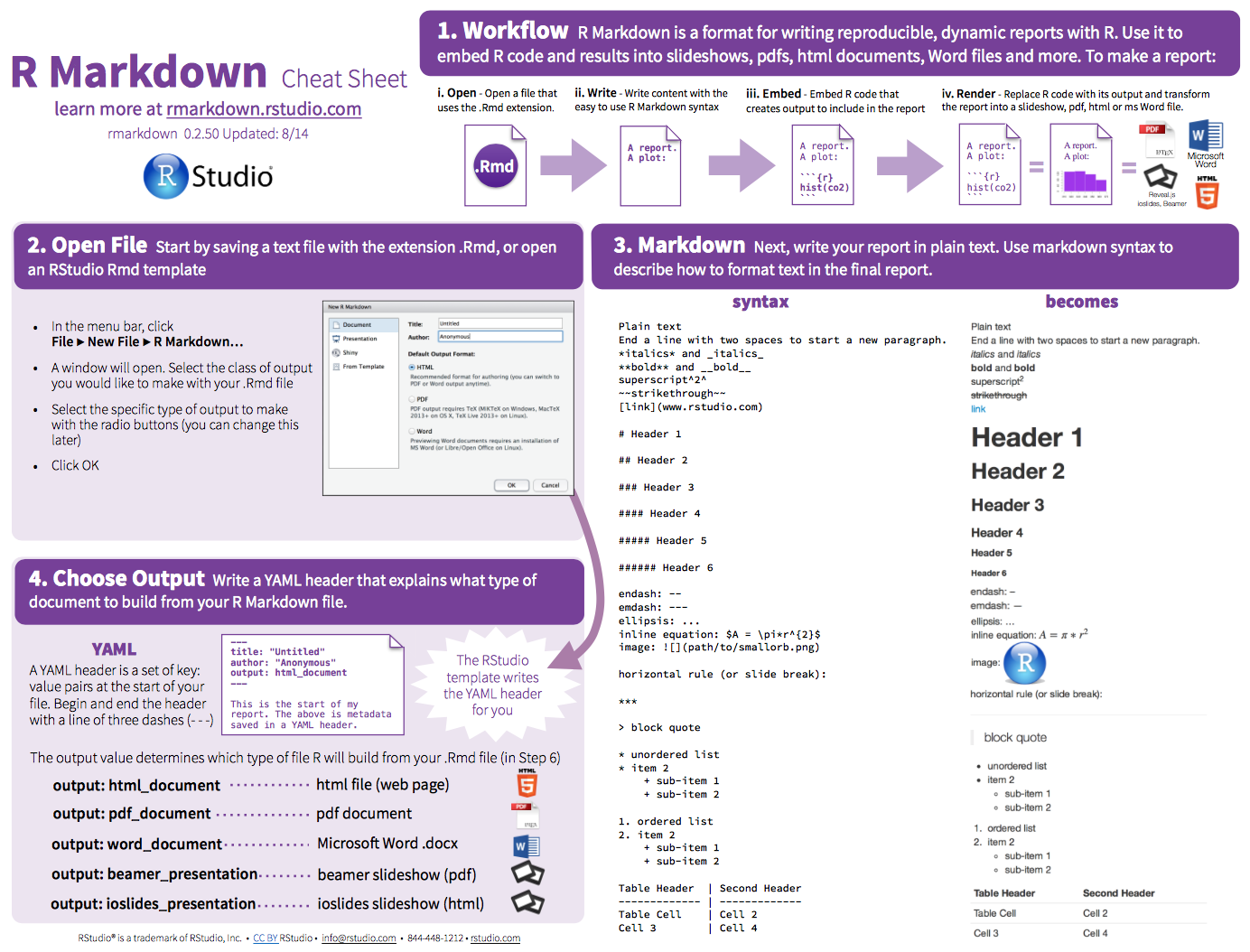

Using latex in rmarkdown code#
These are known as code chunks and look like this: Rmd document should be enclosed by three backwards apostrophes ``` (grave accents!). Code Chunksīelow the YAML header is the space where you will write your code, accompanying explanation and any outputs. To practice this, try writing some formatted text in your. The $ symbols tells R markdown to use LaTeX equation syntax. Note that when a # symbol is placed inside a code chunk it acts as a normal R comment, but when placed in text it controls the header size. Here are a few common formatting commands: Once you knit your document, the output will display text formatted according to the following simple rules. You can use regular markdown rules in your R Markdown document. html file is also saved to the same folder where you saved your. If you want the output to be displayed in the Viewer window in RStudio (the same window where you would see plotted figures / packages / file paths), select “View in Pane” from the drop down menu that appears when you click on the Knit button in the taskbar, or in the Settings gear icon drop down menu next to the Knit button.Ī preview appears, and a. html document, you should press the Knit button in the taskbar:īy default, RStudio opens a separate preview window to display the output of your. Now that we have our first piece of content, we can test the. This is the minimum you should put in your header section. Rmd script:īy default, the title, author, date and output format are printed at the top of your. Insert something like this at the top of your new. Have a flick through quickly to familiarise yourself with the sorts of things you can alter by adding an option to the YAML header. Rules in the header section will alter the whole document. Many other options are available for different functions and formatting, see here for. By default this includes a title, author, date and the file type you want to output to. The YAML HeaderĪt the top of any RMarkdown script is a YAML header section enclosed by. If you have any of your own R scripts that you would like to make into an R Markdown document, you can also use those! 4. Now open the RMarkdown_Tutorial.R practice script from the repository you downloaded earlier in another tab in RStudio and use the instructions below to help you convert this script into a coherent RMarkdown document, bit by bit.

Rmd file to the repository you downloaded earlier from Github.

Rmd file comes with basic instructions, but we want to create our own RMarkdown script, so go ahead and delete everything in the example file. html Document, which can be easily converted to other file types later. Rmd), select File -> New File -> R Markdown._ in RStudio, then choose the file type you want to create. Install.packages ( "rmarkdown" ) library ( rmarkdown ) 3. To see what RMarkdown is capable of, have a look at this undergraduate dissertation, which gives a concise log of their statistical analysis, or the completed demo RMarkdown file for this tutorial. When you knit the RMarkdown file, the Markdown formatting and the R code are evaluated, and an output file (HTML, PDF, etc) is produced. When you create an RMarkdown file (.Rmd), you use conventional Markdown syntax alongside chunks of code written in R (or other programming languages!). You can convert Markdown documents to many other file types like. from plain text files, while keeping the original plain text file easy to read. Markdown is a very simple ‘markup’ language which provides methods for creating documents with headers, images, links etc. RMarkdown presents your code alongside its output (graphs, tables, etc.) with conventional text to explain it, a bit like a notebook. You might choose to create an RMarkdown document as an appendix to a paper or project assignment that you are doing, upload it to an online repository such as Github, or simply to keep as a personal record so you can quickly look back at your code and see what you did. In the world of reproducible research, we want other researchers to easily understand what we did in our analysis, otherwise nobody can be certain that you analysed your data properly. R Markdown allows you to create documents that serve as a neat record of your analysis. R Notebooks (the future of reproducible code? Maybe?).Export an RMarkdown file into many file formats.
Using latex in rmarkdown how to#
Learn how to construct an RMarkdown file.Understand what RMarkdown is and why you should use it.


 0 kommentar(er)
0 kommentar(er)
